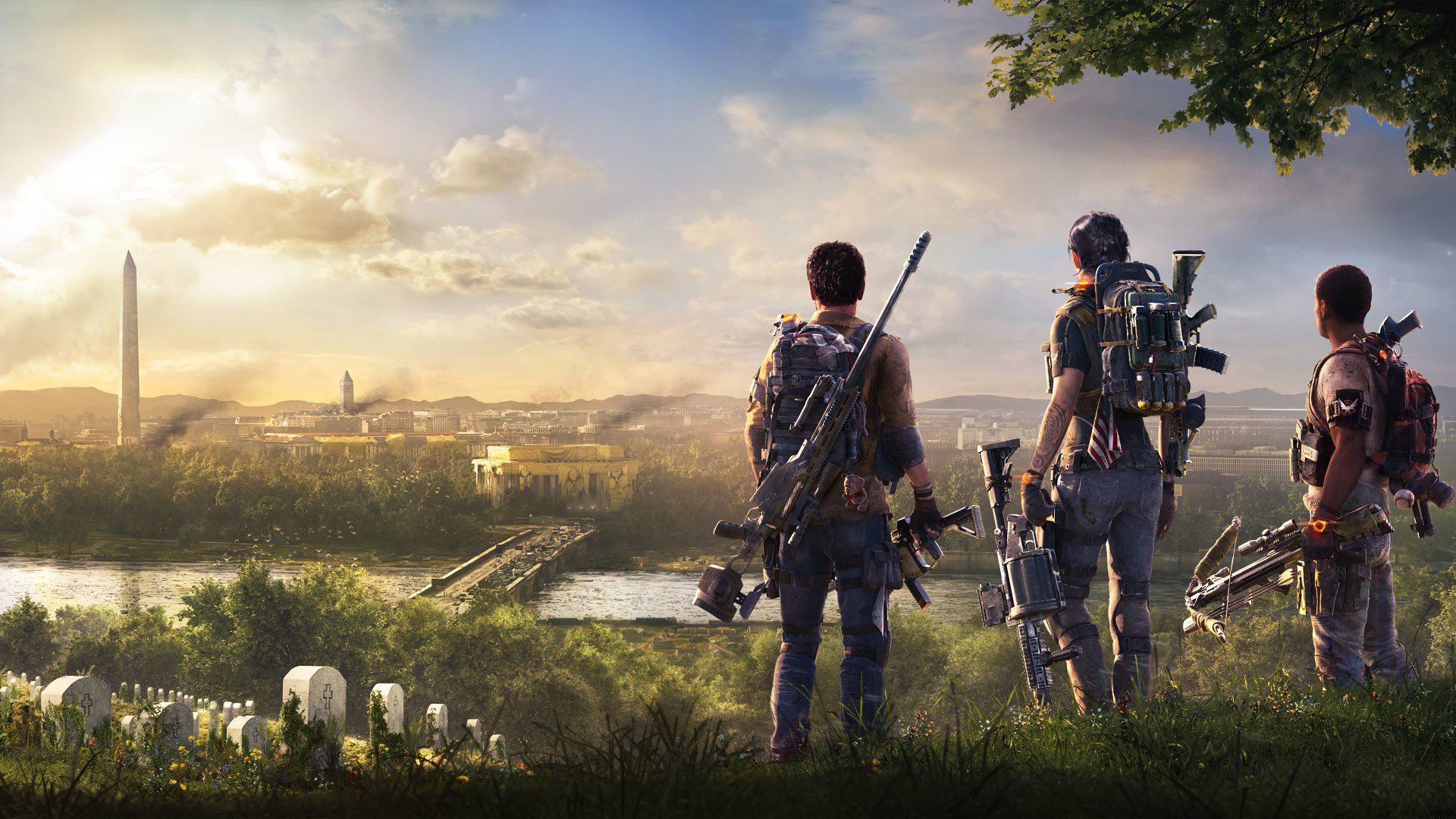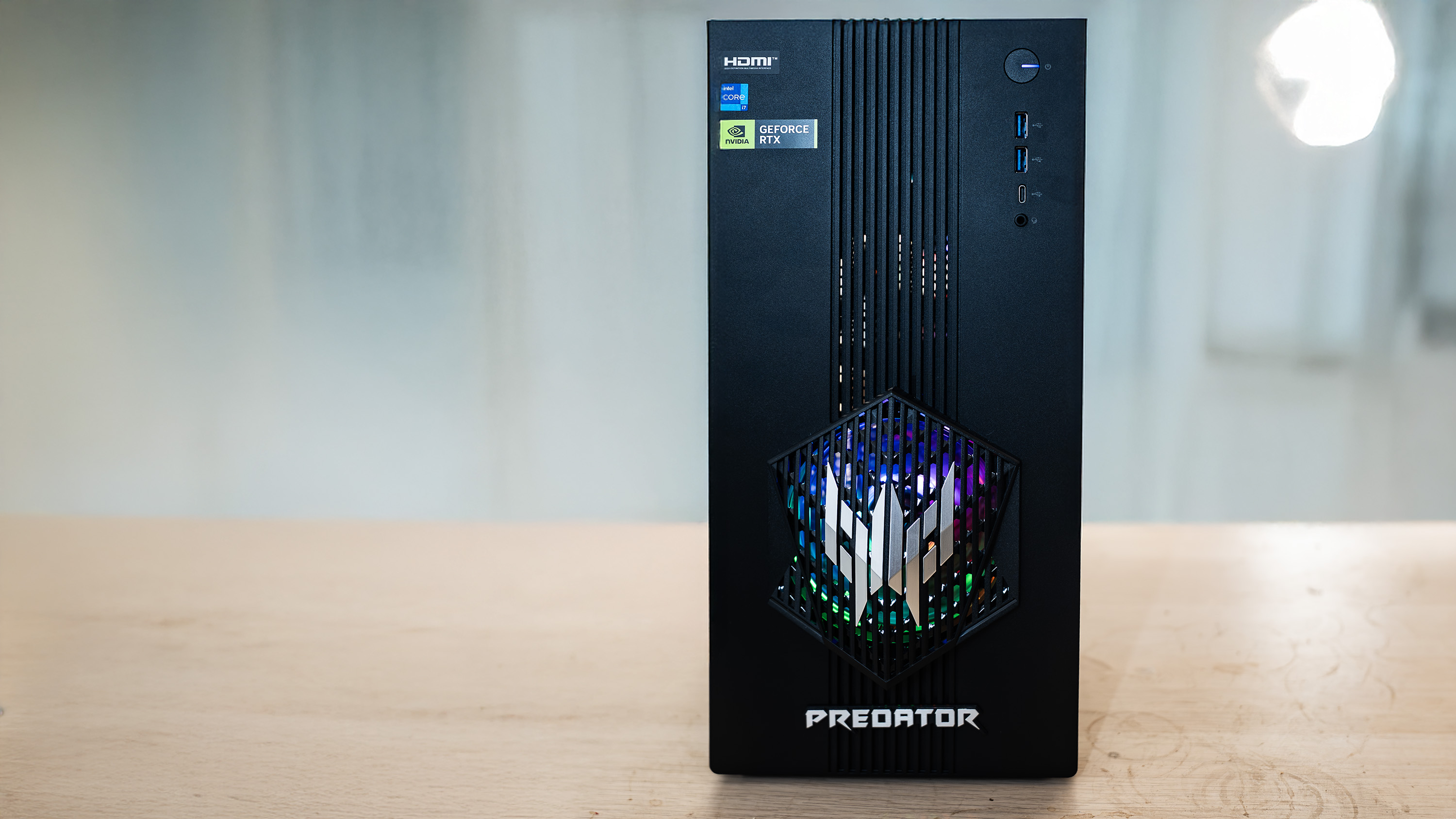Our Verdict
A packed, rewarding, and frequently thrilling looter shooter that should have a bright future.
PC Gamer's got your back
What is it? Co-op looter shooter set in an open world Washington DC.
Expect to pay $60/£50
Developer Ubisoft Massive, various other in-house studios
Publisher Ubisoft
Reviewed on i5 8600K, 16GB DDR4, GTX 1080Ti
Multiplayer Four-player co-op, PvP
Link Official site
Buy it uPlay
After 25 hours of wrestling with BioWare's Anthem, it's funny how grateful I am for the little things in The Division 2—stuff like being able to switch my loadout on the fly, without first exiting a mission or sitting through a loading screen. No one's tried to make me and three other players sit through a boring mid-mission cutscene, either. In fact, The Division 2 barely makes me pay attention to its story at all. What a treat!
The Division 2 presents a much stronger campaign experience than the first game, with fewer filler missions, and better open world side activities. Its endgame, too, is a satisfyingly different offering to the preceding hours, remixing levels, making the world feel more alive, and escalating the difficulty of side activities to keep you playing. I will say this: if The Division didn't grab you at any point during the past two years of well-considered updates, I don't think this will necessarily be the right game for you now. It's largely a superior version of the same thing: tough third-person co-op shootouts, interlocking player skills, incremental loot rewards, and a familiarly dry Tom Clancy military tone.
Where it improves is in the cadence of its rewards, pelting you with loot and experience points from various sources, and making the next upgrade feel like a natural result of your journey through the game rather than being arduously earned. If you're looking for a strong looter shooter you can enjoy with friends in the wake of Anthem's troubled launch, or you want a mid-season break from Destiny 2, this will likely be a strong fit. It helps that the main mission design is mostly terrific, taking you through a variety of real-world tourist spots for shootouts with the game's three enemy factions: the Hyenas, True Sons and Outcasts, all of which behave a bit differently in combat.
Enemies don't feel as bullet-hungry as they did in the first game, and some of the elite enemies—whose armour is peeled off with gunfire—are genuinely fun to fight. It's a mostly great shooter, let down by the occasional AI issue where an enemy will get stuck on the spot, or spend so long climbing around that you can easily pick them off.
Each main campaign mission feels like a real event. Given that no one really makes linear third-person shooter games now—here they're isolated parts of a massive open world looter game—it's easy to forget what these kind of levels feel like when they're designed well.
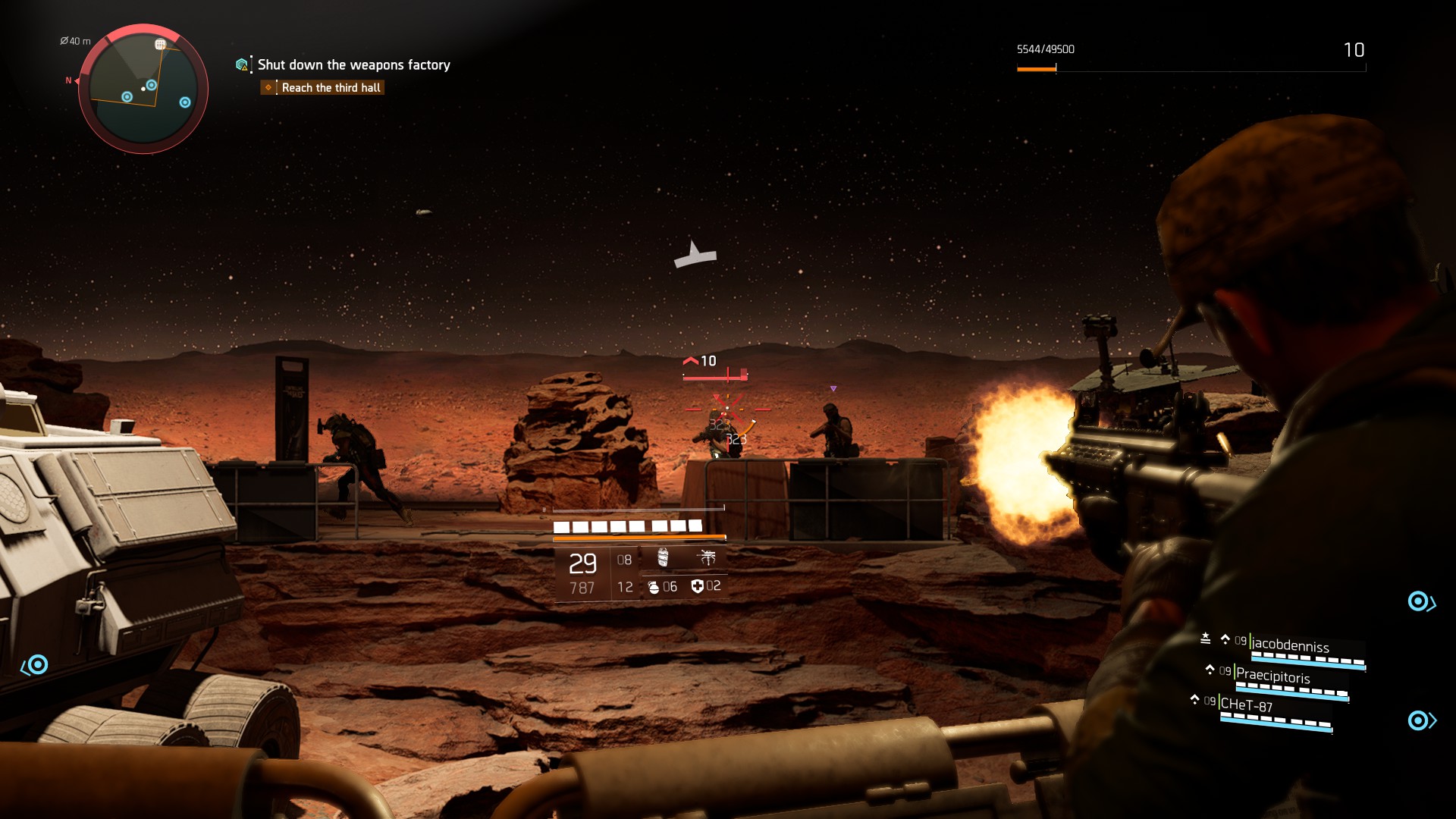
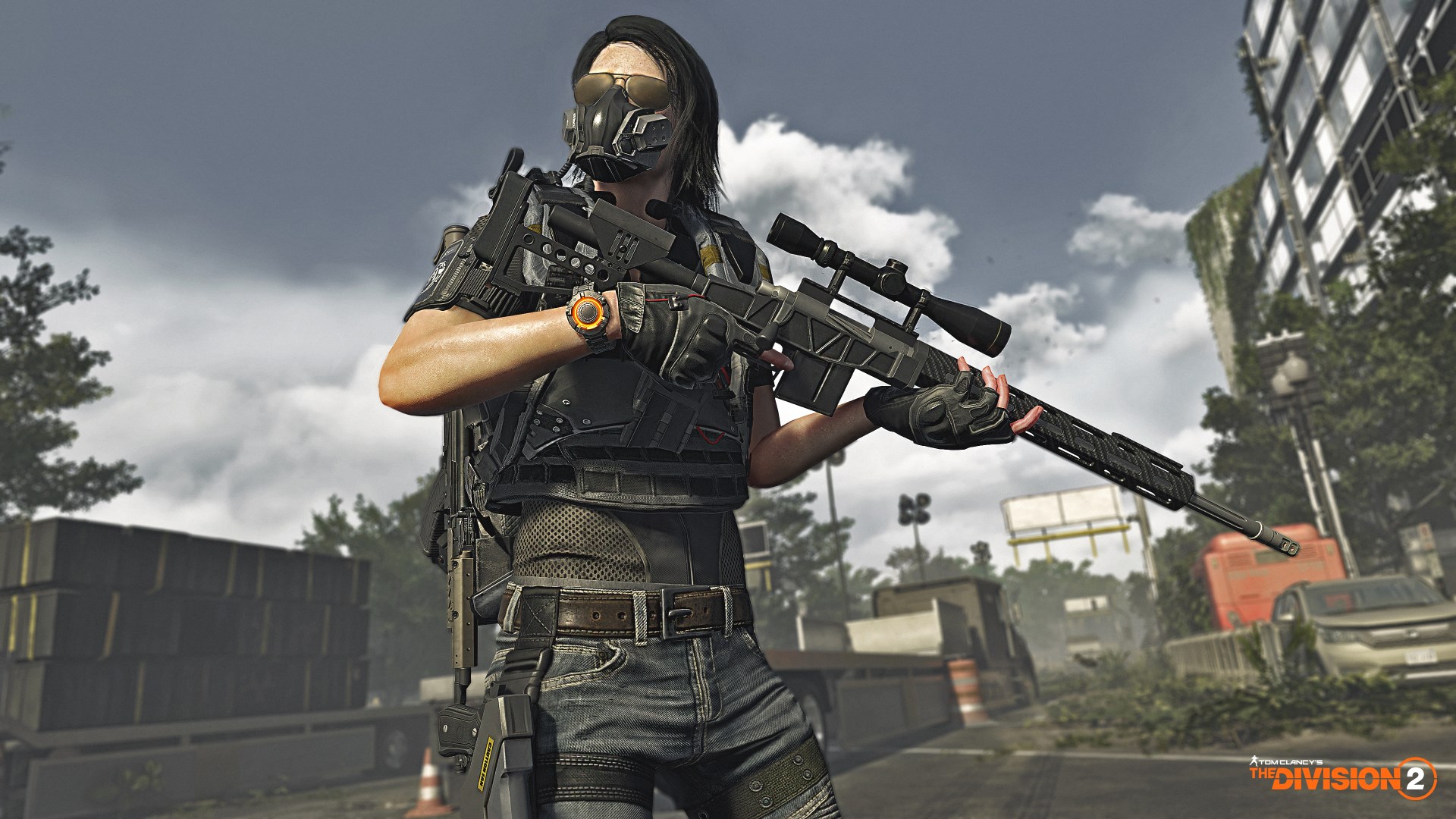
The Division 2 Review
The Division 2 settings and performance
The Division 2 fast leveling guide
The Division 2 solo player guide
The Division 2 specializations guide
The Division 2 crafting guide
The Division 2 perks guide
The Division 2 gear sets guide
The Division 2 endgame and World Tier 5 guide
There's an amazing excursion into the American History Museum, where there's a (probably tasteless) firefight in the midst of a Vietnam recreation exhibit, complete with royalty-free version of The End by The Doors playing in the background. Then there's a gunfight in the Air & Space Museum's planetarium and Mars exhibits, which for a few minutes make you feel like you're playing a sci-fi shooter. The finale of the campaign, meanwhile, offers a long battle on the roof of the Capitol Building, which is a great location for a selfie with the game's photo mode once you're done. The choices of setting for the main missions give them a lot of flavour. The longer strongholds that bookend the campaign, with one for each of the three factions, offer the biggest and most exhilarating set pieces in the game.
As someone who's never visited the city in real life, Washington DC isn't as immediately recognisable as the first game's New York, barring a few obvious landmarks. It undoubtedly feels more alive than the first game's world, though, with plenty of friendly NPCs breaking into firefights with the various enemy factions. It can be exciting to arrive halfway through a battle to turn the cause in your side's favour, bravely shooting unsuspecting enemies in the back while they're distracted by your allies.
Keep up to date with the most important stories and the best deals, as picked by the PC Gamer team.
DC is also beautiful in places, especially when you move out of the drab opening urban areas and into wide open spaces like West Potomac Park. The weather effects and day/night cycles contribute so much to the game's atmosphere, with the world looking almost entirely different when covered in rainfall, and the odd thunderstorm making firefights particularly dramatic.
It's almost post-apocalyptic—you could see this being used as the setting for a Resident Evil game, particularly the Dark Zones. If Manhattan in The Division was set the day after the end of the world, here it feels like that same event is a distant part of America's history. Empty streets are overgrown, buildings are run down, and abandoned cars are everywhere. Some sights in this environment are truly spectacular, like the image of a destroyed Air Force One outside the Capitol Building (of course it contains loot).
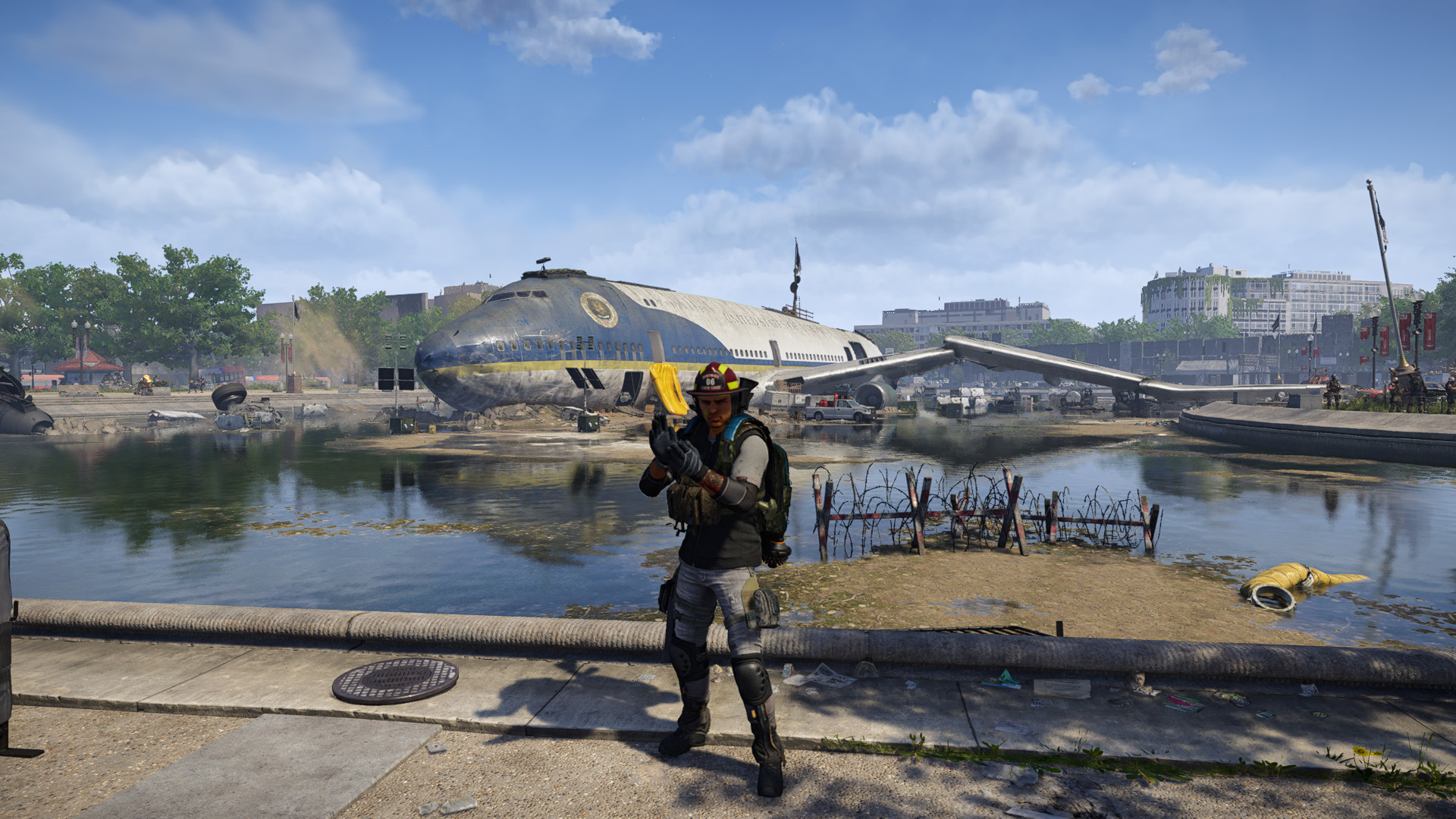
Most of the activities dotted around DC's map are genuinely good, particularly control points, which you liberate from enemy factions with the help of AI pals. They each have the same objectives—clear the area of enemies, fight an elite, then defend the same area and fight another elite—but they're laid out differently enough that they challenge you to think about the space and enemy positioning. At endgame, too, they'll be taken back by enemies, continually climbing in difficulty as you keep reclaiming them for better rewards.
It feels like The Division 2 has launched with an extremely healthy supply of things to do
The journey to level 30 has a little filler in the form of side missions or repetitive activities, like stopping propaganda broadcasts, but not much. It's a swift journey. I can't fault The Division 2 for a lack of distractions, either: coming out of the barren world of Anthem, it's almost refreshing to be attacked by the classic Ubisoft array of map icons. I wouldn't recommend soloing the main missions (the matchmaking is decent for those), but you can enjoy most of the open world stuff alone, if that's your preference—at least until you reach the harder activities in the endgame.
Progression is a lot comfier than the first game. You unlock skills (your character's abilities, basically) at a fast clip throughout the campaign. You can also open up variants for them with the game's plentiful SHD Tech points early on, rather than having to upgrade different wings of your base like you did in The Division 1. It feels much more flexible, like the developers want you to experiment with your ideal loadouts in advance of reaching the endgame. I'm particularly fond of the Hive skill, which I immediately unlocked with a Stinger variant, which basically shoots small robot killer bees at any enemy that walks within its radius.
It's also refreshingly common to see enemies using novelty weapons and ammo types on you, sending deadly remote controlled cars in your direction, or gumming you up with the Chem Launcher's riot foam while other enemies open fire on you. This gives some real variety and surprise to the game's many shootouts.
Entering endgame
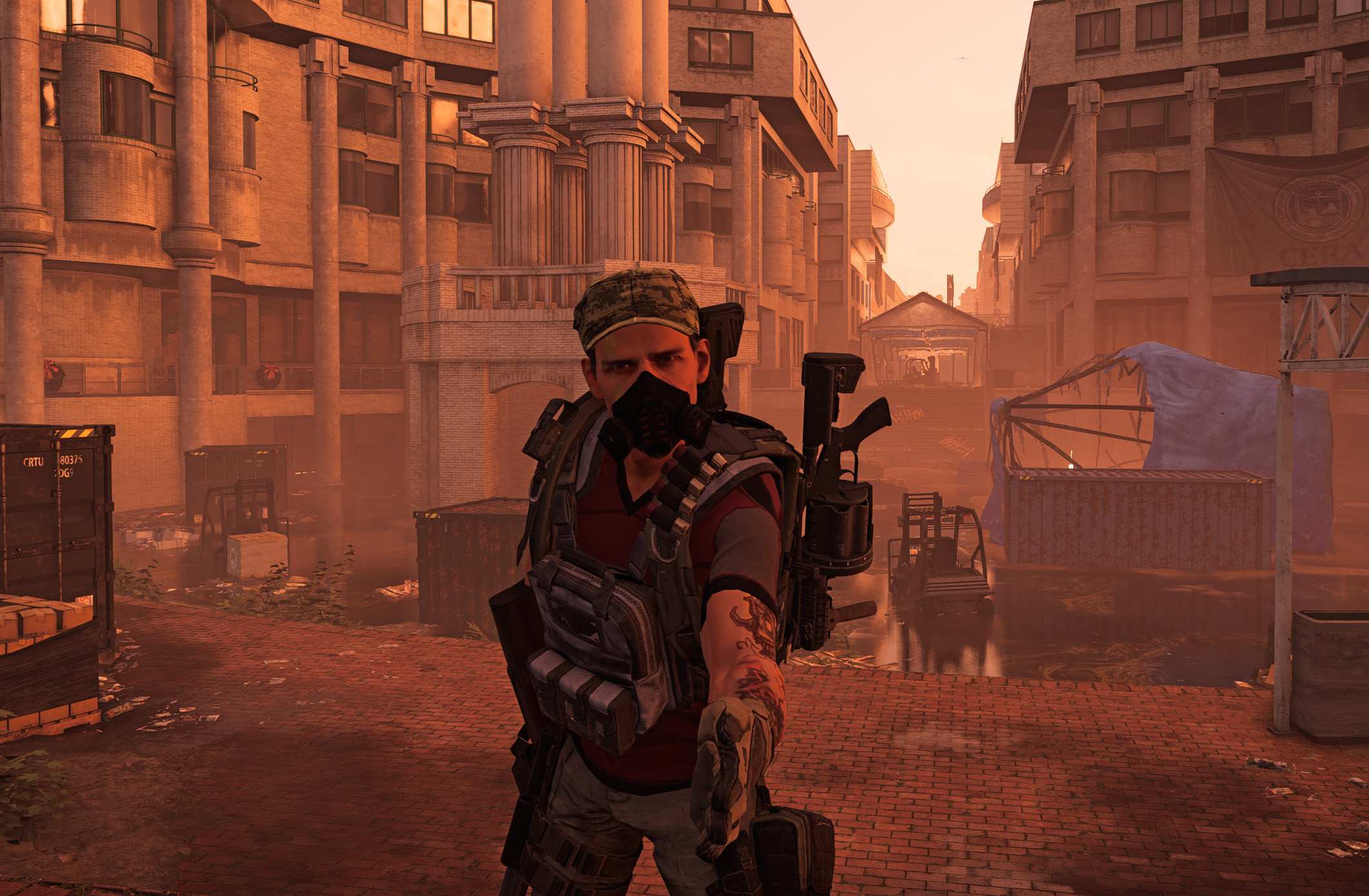
Once you hit the level 30 cap, a new faction called the Black Tusk is added to the game. Like the first Division, you start progressing through World Tiers, which determine the difficulty of the enemies you face and the loot you can earn. You'll then revisit most of the earlier main mission locations in their 'invaded' forms, remixed with this high-tech force's new enemy types. The Black Tusk fires off explosive drones like they bought too many of them during a Black Friday sale, and send in sniper-equipped robot dogs that look like they jogged straight out of a Metal Gear game. These invaded mission variants are a lot of fun—and it's hard to resent rerunning mission settings that look this nice.
Complete a couple of them, and your gear score will likely be high enough to meet the requirements of the 'invaded' versions of the strongholds, where the Black Tusk will also be waiting in droves. Finishing all three of these strongholds unlocks what's currently the highest World Tier available in the endgame, with World Tier 5 and the additional Black Tusk stronghold opening up at some point after launch.
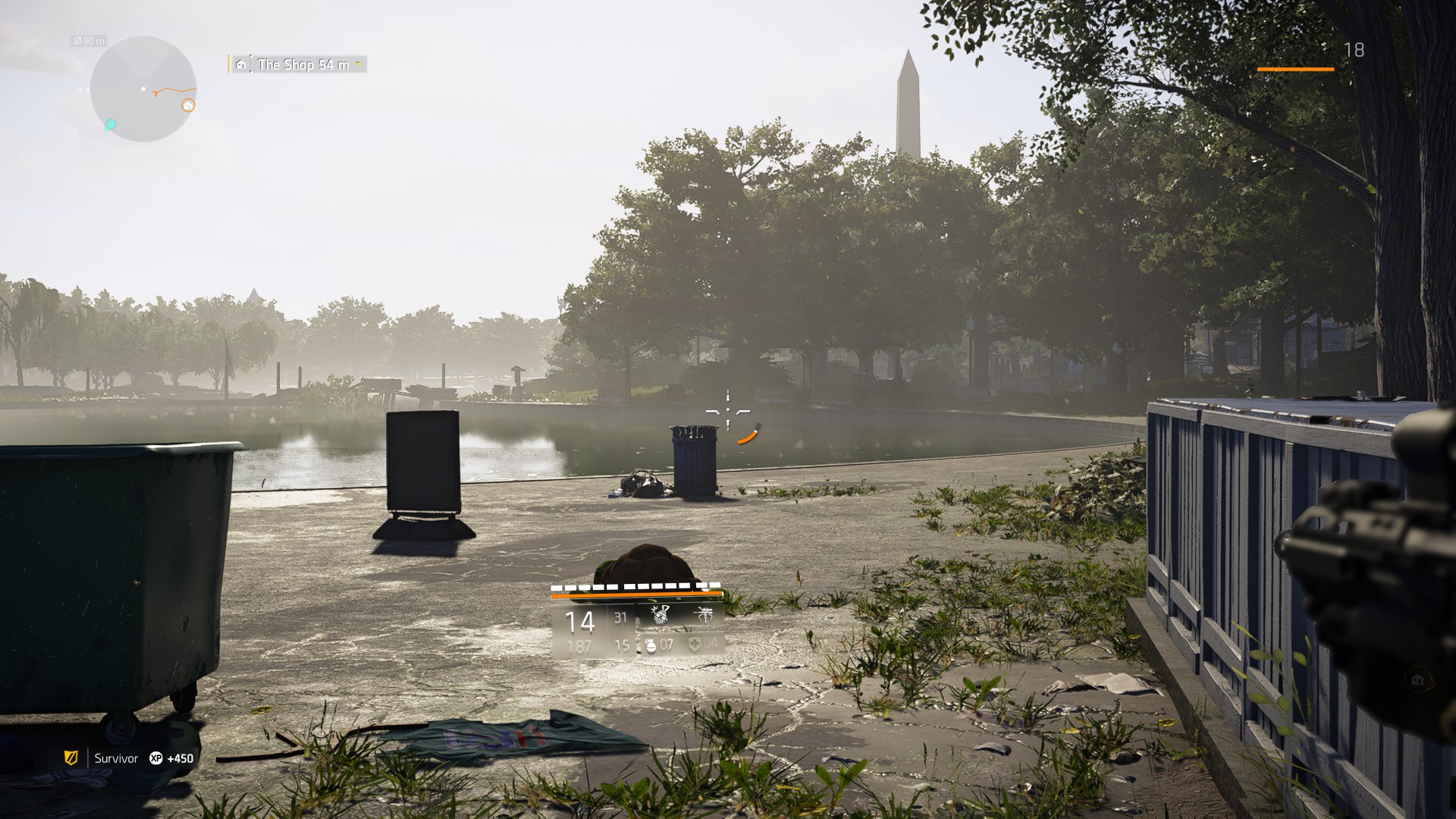
Settings: V-sync, shadow quality, spot shadows, spot shadow resolutions, contact shadows, resolution scale, sharpening, particle detail, volumetric fog, reflection quality, local reflection quality, vegetation quality, sub-surface scattering, anisotropic filtering, parallax mapping, ambient occlusion, depth of field, object detail, extra streaming distance, lens flare, vignette effect, water quality, chromatic aberration, projected texture resolution, high resolution sky textures, terrain quality.
Performance: The Division 2 has delivered strangely inconsistent performance over the weekend on my PC, with slowdowns even after turning a number of settings down, and an overall struggle to stay at 1080p 60fps. I recommend checking out Jarred's performance settings article for much more on this side of the game.
If you were hoping the Black Tusk would entail an entirely new campaign, that's not really what the endgame offers here. The Division 2 successfully feels very different after level 30 by bringing the map to life, though, with enemy movements shown on the map as they reclaim control points, and newer, tougher multi-part bounties to tick off. The Black Tusk also brings its own new activities, like dramatic battles against Batplane-sized drones. The battle for DC really feels like an ongoing struggle, and running missions on higher difficulty settings provides better rewards, while even regular activities start offering greater challenges.
The real sweetener at level 30 is unlocking the three specialisations, essentially classes, which each have their own new progression paths. They also offer their own signature weapons (sniper rifle for the Sharpshooter, grenade launcher for the Demolitionist, crossbow for the Survivalist), which are fantastic fun to unleash in a pinch, and require a specific ammo type that's a little rare. I've focused on the Demolitionist, which provides nice damage bonuses for my treasured light machine guns, and a wicked class-exclusive turret upgrade that unleashes comically deadly mortar fire.
Specialisations give you a welcome sense of direction at this point in The Division 2, nudging you towards the best types of weapons for your play style. Pleasingly, you can also switch between the three at any time, and completing the upgrade tree for each will definitely take a while to tick off. You can also recalibrate your gear for your play style, taking a particular trait you like from another weapon or item of the same type, and applying it to the one you want to use in your inventory.
It feels like The Division 2 has launched with an extremely healthy supply of things to do, then, but as with any promise of a deep post-game, a lot depends on what happens next: how players feel about the game after a few weeks of digesting what's here at launch, how Ubisoft reacts to that, and whether the post-release content will keep providing good reasons to continue playing. I'm particularly excited to see what The Division 2's version of an eight-player raid looks like, and I hope the planned additions to the campaign bring main missions that are as exciting as what's in here.
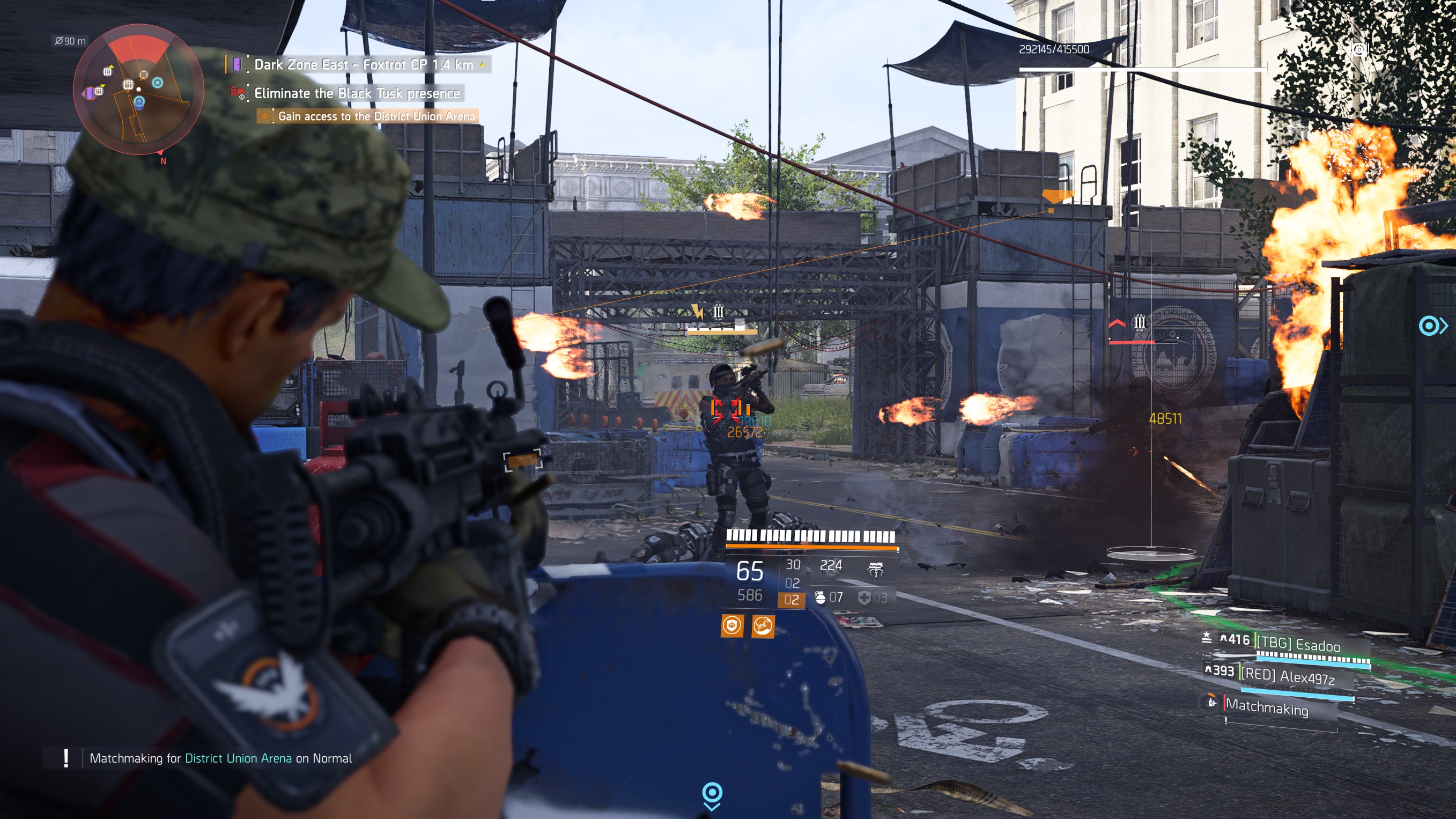
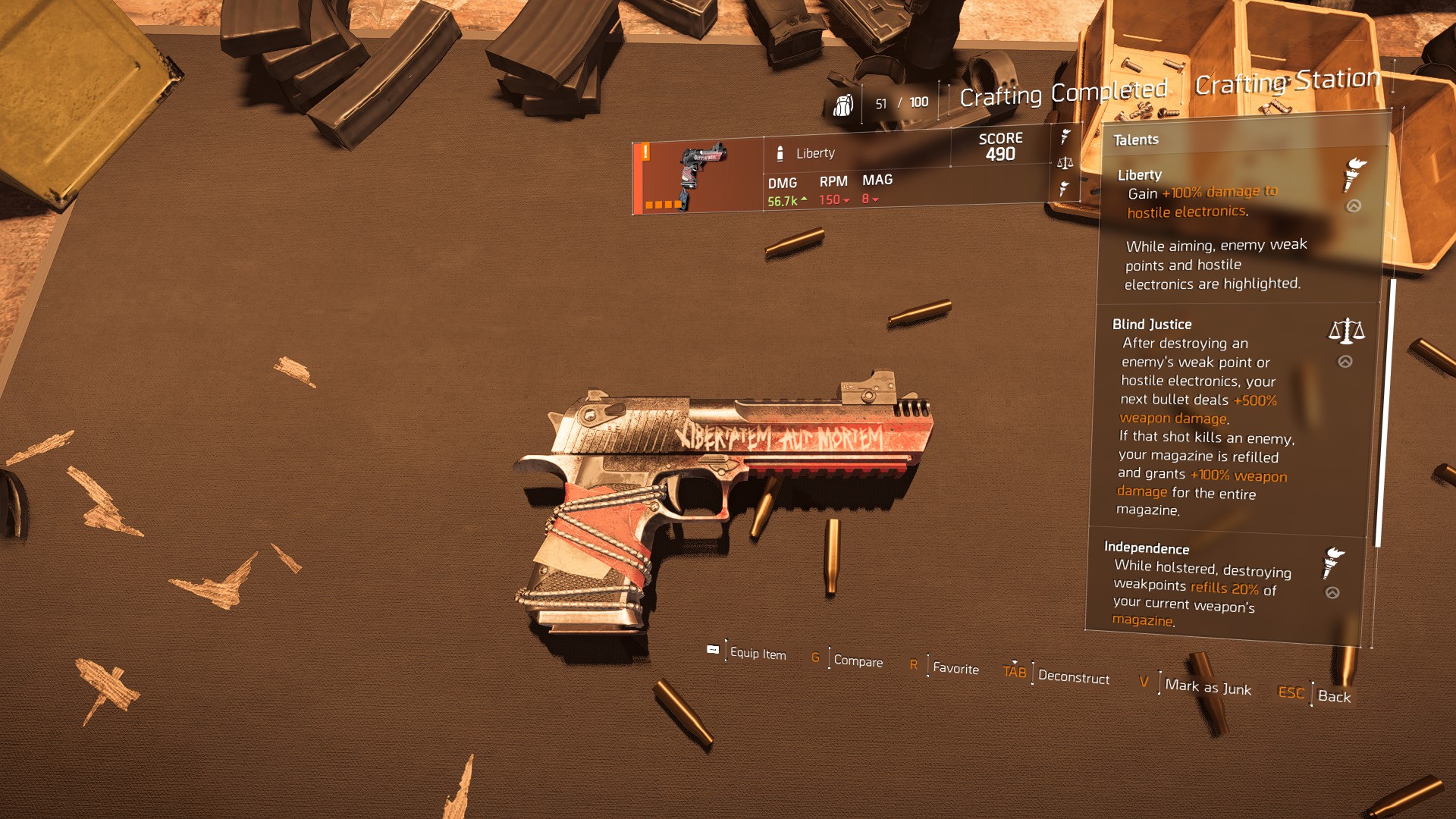
The Division 2 hyena key locations guide
The Division 2 Dark Zone key guide
The Division 2 masks locations guide
The Division 2 Liberty exotic pistol guide
The Division 2 Chatterbox exotic SMG guide
The Division 2 Sweet Dreams exotic guide
The Division 2 Pestilence exotic LMG guide
The Division 2 Merciless exotic rifle guide
The Division 2 Nemesis exotic rifle guide
The hybrid PvP/PvE area The Dark Zone returns from the first game in three varieties. All of the Dark Zones here are different in style and layout: the East one has an Apocalypse Now-y feel, a moody area that's even more overgrown than the rest of the map. Then there's Dark Zone South, which features a built up urban area. Finally, there's Dark Zone West, a previously walled off community that's now a ghost town, closer to a Fallout city in appearance. Loot is normalised as standard in each one, which means going into them isn't too daunting, but there's a hardcore player-focused 'occupied' event that will turn normalising off for a specific DZ. The Dark Zone still has the potential to create great player-generated, nerve-wracking stories, and it too is nice and generous with loot. I really recommend sweeping each area with a group, though.
The game has not launched in a perfect state. I've had a few crashes over the course of the last week, and PC Gamer's Tom Senior has had a few weird error screens as he's been kicked out of the game. Generously, you're dropped back into a mission if it crashes halfway through, but it's far from ideal. I've also had a few random connectivity drops in its otherwise perfectly alright Conflict PvP mode, which the game seems less equipped to deal with.
Right now, too—and being addressed by Ubisoft—there's an annoying skill bug that makes certain items like turrets vanish almost immediately upon use. I also keep getting an error where I get stuck while trying to deploy a skill, giving enemies an easy window to open fire on me. Climbing over objects is stiffer than I'd like, and there's at least one set of stairs in the open world I just can't walk down at all. Ubisoft is diligently talking about how it's addressing problems with the game, though, which bodes well for its long term prospects. And personally, I haven't encountered any errors that have prevented my progress through the game, even though I know other players have.
This is a very complete-feeling follow-up to The Division, from a team that clearly learned a lot about its audience after a series of successful, high-value updates. Dedicated players know they want this already. For everyone else, this is an exciting, moreish shooter set in an impressive world that already offers tens of hours of enjoyable shooting and cool loot.
A packed, rewarding, and frequently thrilling looter shooter that should have a bright future.
